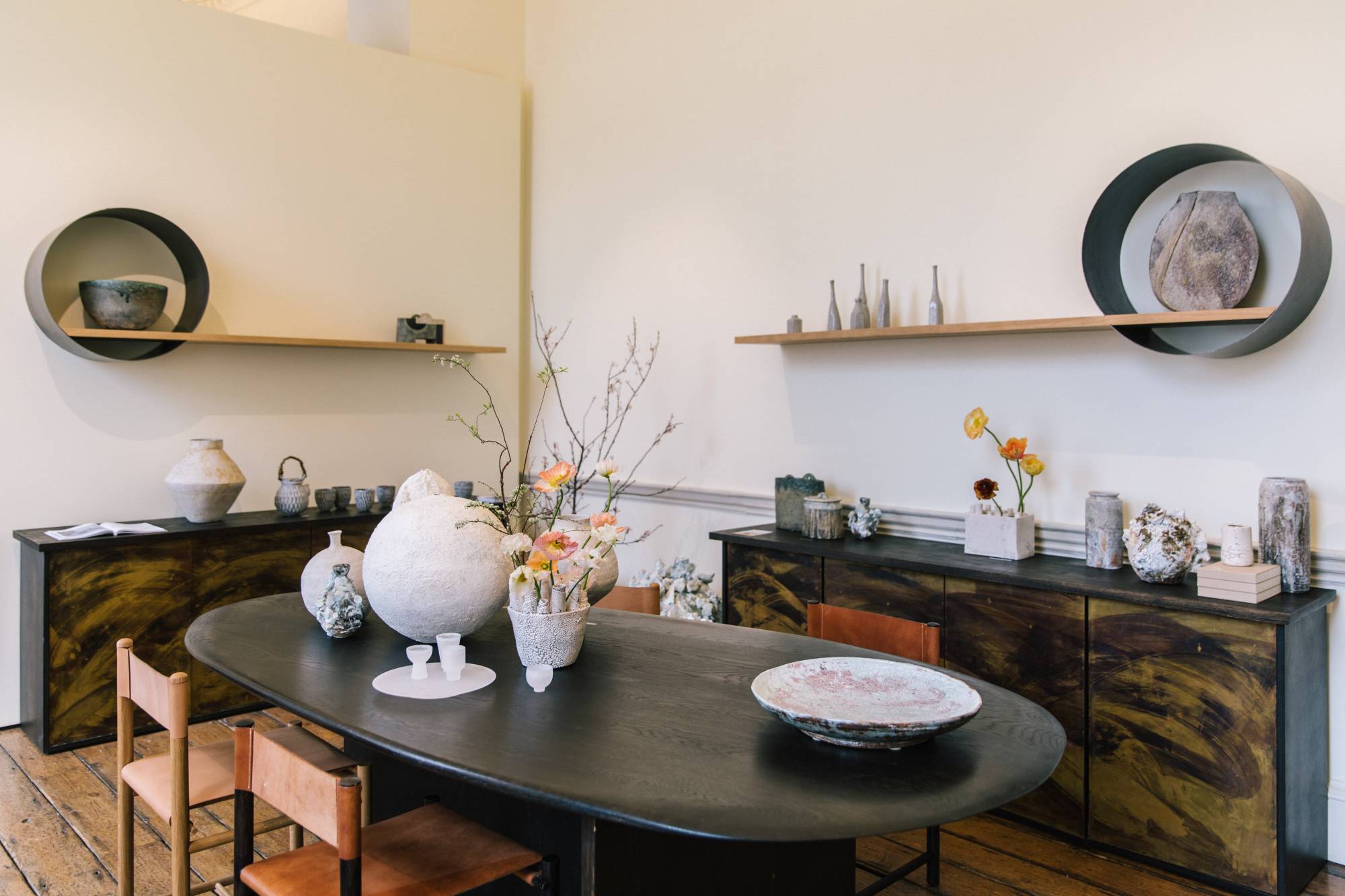During a recent interview via video chat at the Collect craft design fair at Somerset House in London, artist Kazuhito Takadoi flips his iPad camera toward several of his sculptural works — complex pieces of fine hawthorn twigs carefully tied together with minute knots of waxed linen twine to form delicate three-dimensional rings.
“It’s difficult to explain the medium and sculptural aspects of my work in still images,” he says, as he pans around the pieces and takes the camera in for a close-up. “I collect the materials myself from nature and because it’s so intricate, I had to use tweezers to tie the threads.”
Takadoi, represented by Jaggedart gallery in London, is one of around 20 Japanese artists who showcased their contemporary works at the annual Collect event, which this year features over 30 galleries. Officially called Collect: The Leading International Fair for Contemporary Craft and Design, and produced by the U.K. national charity Crafts Council, the event was held in-person from Feb. 25 to 27 and will continue virtually through March 6.
















With your current subscription plan you can comment on stories. However, before writing your first comment, please create a display name in the Profile section of your subscriber account page.